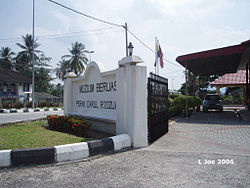
Malaysia is a modern concept, created in the second half of the 20th century. However, contemporary Malaysia regards the entire history of Malaya and Borneo, spanning thousands of years back to prehistoric times, as its history.

Perak is a state of Malaysia on the west coast of the Malay Peninsula. Perak has land borders with the Malaysian states of Kedah to the north, Penang to the northwest, Kelantan and Pahang to the east, and Selangor to the south. Thailand's Yala and Narathiwat provinces both lie to the northeast. Perak's capital city, Ipoh, was known historically for its tin-mining activities until the price of the metal dropped, severely affecting the state's economy. The royal capital remains Kuala Kangsar, where the palace of the Sultan of Perak is located. As of 2018, the state's population was 2,500,000. Perak has diverse tropical rainforests and an equatorial climate. The state's mountain ranges belong to the Titiwangsa Mountains, which is part of the larger Tenasserim Hills system that connects Myanmar, Thailand and Malaysia.

Garcinia is a genus of flowering plants in the family Clusiaceae native to Asia, America, Australia, tropical and southern Africa, and Polynesia. The number of species is disputed; Plants of the World Online (POWO) recognise up to 400. Commonly, the plants in this genus are called saptrees, mangosteens, or garcinias, and is one of several plants known as by the name "monkey fruit".
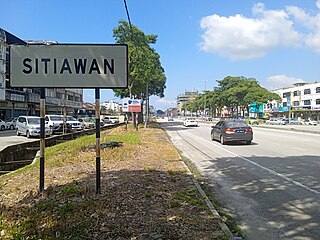
Sitiawan (alternate spelling: Setiawan; origin: from Malay, a portmanteau of SetiaKawan, meaning "Loyal Friend") is a mukim and town in Manjung District, Perak, Malaysia.

The Kuala Kangsar is the royal town of Perak, Malaysia. It is located at the downstream of Kangsar River where it joins the Perak River, approximately 25 km (16 mi) northwest of Ipoh, Perak's capital, and 98 km (61 mi) southeast of George Town, Penang. It is the main town in the administrative district of Kuala Kangsar, about 235 km from Kuala Lumpur, Malaysia. The town is administered by the Kuala Kangsar Municipal Council, formerly known as Kuala Kangsar District Council from 1 January 1980 until 17 February 2004.
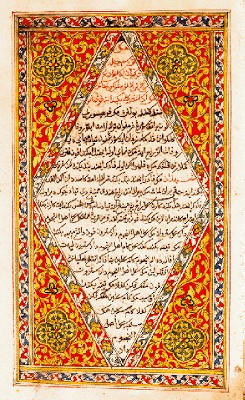
The Malay Annals, originally titled Sulalatus Salatin, is a literary work that gives a romanticised history of the origin, evolution and demise of the great Malay maritime empire, the Malacca Sultanate. The work, which was composed sometime between the 15th and 16th centuries, is considered one of the finest literary and historical works in the Malay language.

Kota Gelanggi is a limestone cave complex in Jerantut, Pahang, Malaysia. It is also claimed to be the name of a 'lost city' in Johor but authorities have found no evidence to support this claim.

The National Museum is in Jalan Damansara, in Kuala Lumpur, Malaysia. The museum is close to Perdana Lake Gardens and it provides an overview of Malaysian history and culture. Its façade comprises elements from both traditional Malay and modern features. It was inaugurated on 31 August 1963, and it serves as a repository of Malaysia's cultural and historical heritage.

Gangga Negara was a semi-legendary Malay-Hindu kingdom mentioned in the Malay Annals. Researchers believe that the kingdom was centred at Beruas and it collapsed after an attack by King Rajendra Chola I of Tamilakam, between 1025 and 1026. According to another Malay annals, the Hikayat Merong Mahawangsa known as the Kedah Annals, Gangga Negara may have been founded by Merong Mahawangsa's son Raja Ganji Sarjuna of Kedah, allegedly a descendant of Alexander the Great or by the Khmer royalties no later than the 2nd century. Raja Gangga Shah Johan was one of its kings.

Taiping is a town located in Larut, Matang and Selama District, Perak, Malaysia. It is located approximately 48 km (30 mi) northwest of Ipoh, the capital of Perak, and 78 km (48 mi) southeast of George Town, Penang. With a population of 245,182, it is the second largest town in Perak after Ipoh, the state capital.
Teluk Intan is a town in Hilir Perak District, Perak, Malaysia. It is the district capital, the largest town in the district and fourth largest town in the state of Perak with an estimated population of around 172,505, more than half of Hilir Perak district's total population (232,900).

Rajendra I, often referred to as Rajendra the Great, Gangaikonda Cholan, and Kadaram Kondan, was a Chola Emperor who reigned from 1014 and 1044 CE. He was born in Thanjavur to Rajaraja I and his queen Vanavan Mahadevi and assumed royal power as co-regent with his father in 1012 until his father died in 1014, when Rajendra ascended to the Chola throne. During his reign, the Chola Empire reached its zenith in the Indian subcontinent; it extended its reach via trade and conquest across the Indian Ocean, making Rajendra one of only a few Indian monarchs who conquered territory beyond South Asia.

The Manjung District, formerly known as Dindings, is a district in the south-western part of the state of Perak, Malaysia. It is the 26th-most populated district in Malaysia. It is administered by the Manjung Municipal Council, formerly known as Manjung District Council from 1 January 1980 until 31 July 2001. The district is well known for Pangkor Island, an attraction in Perak and the home of the Royal Malaysian Navy (TLDM), Lumut Naval Base and dockyard. Dinding was once part of the British Straits Settlements colony. Seri Manjung is the district's principal urban centre while smaller towns include Lumut town, Sitiawan town, Ayer Tawar, Pantai Remis, Changkat Keruning and Beruas.
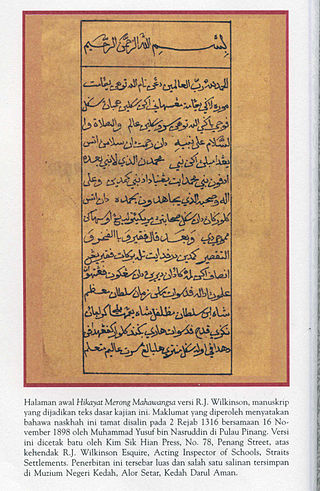
The Hikayat Merong Mahawangsa, alternatively spelt Hikayat Marong Mahawangsa and also known as the Kedah Annals, is a Malay literary work that gives a romantic account of the history and tales relating to the Malay kingdom of Kedah. The work is thought to have been written in the late 18th century or some time in the 19th century. Although it contains historical facts, there are also many incredible assertions in its accounts. The era covered by the text ranged from the opening of Kedah by Merong Mahawangsa, described as a descendant of Dhu al-Qarnayn until the acceptance of Islam.

Pantai Remis is a coastal town in Manjung District, Perak, Malaysia. It is situated in between Simpang and Sitiawan.
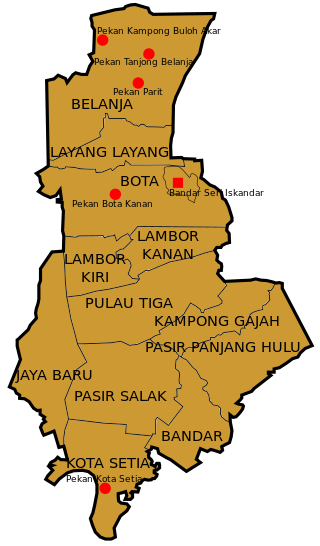
Bota is a mukim in Perak Tengah District, Perak, Malaysia. It comprises two geographical areas: Bota Kiri and Bota Kanan as it is divided by the Perak River. There is a river terrapin breeding center in Bota Kanan. Bota is also well known for its durian fruit. The town has over fifteen mosques.

Southeast Asia was in the Indian sphere of cultural influence from 290 BCE to the 15th century CE, when Hindu-Buddhist influences were incorporated into local political systems. Kingdoms in the southeast coast of the Indian subcontinent had established trade, cultural and political relations with Southeast Asian kingdoms in Burma, Bhutan, Thailand, the Sunda Islands, Malay Peninsula, Philippines, Cambodia, Laos, and Champa. This led to the Indianisation and Sanskritisation of Southeast Asia within the Indosphere, Southeast Asian polities were the Indianised Hindu-Buddhist Mandala.

The Beruas Museum is a museum in Beruas, Manjung District, Perak, Malaysia. The goal of the Beruas Museum is to collect history and artifacts related to the lost kingdom of Gangga Negara and Beruas.
Perak Malay is one of the Malay dialects spoken within the state of Perak, Malaysia. Although it is neither the official language nor the standard dialect in the whole state of Perak, its existence which co-exists with other major dialects in the state of Perak still plays an important role in maintaining the identity of Perak. In spite of the fact that there are five main dialects traditionally spoken in Perak, only one of which is intended by the name "Perak Malay". There are subtle phonetic, syntactic and lexical distinctions from other major Malay dialects. Perak Malay can be divided into two sub-dialects, Kuala Kangsar and Perak Tengah, named after the daerah (districts) where they are predominantly spoken.

The Kingdom of Reman or Kingdom of Rahman was a landlocked semi-independent Malay kingdom established in northern Malay Peninsula.
